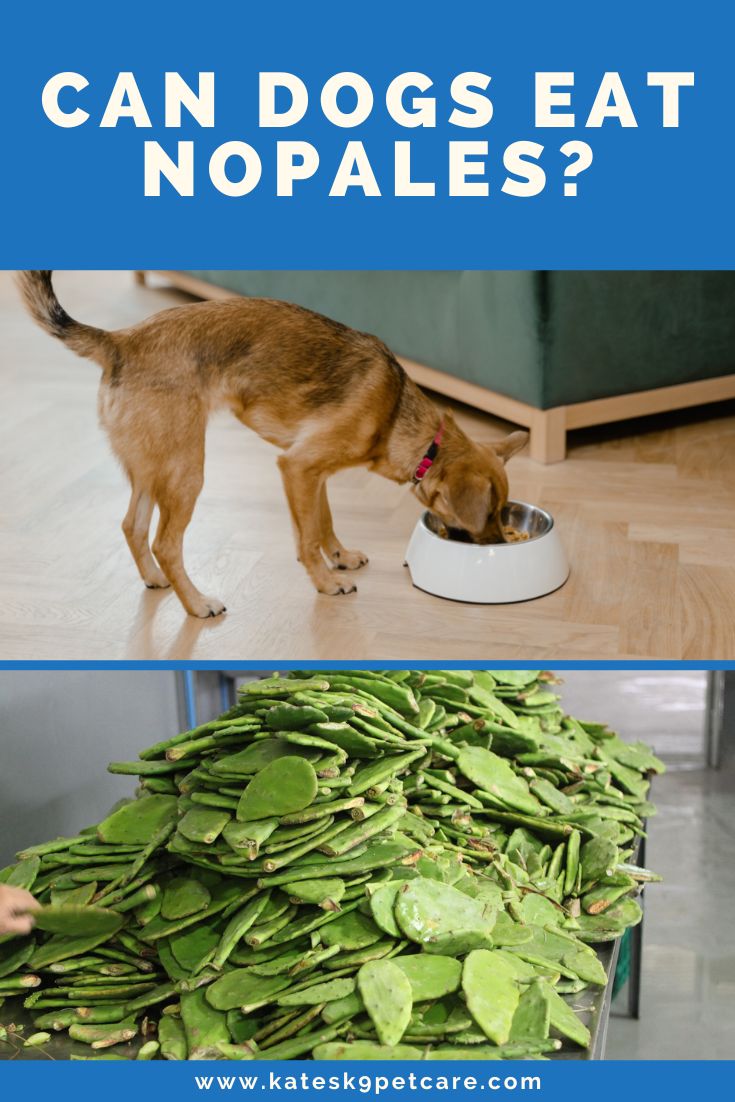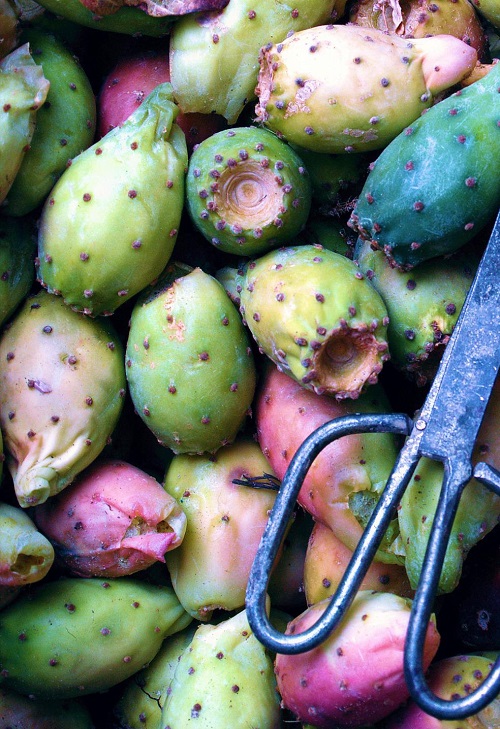If you just got back from your local Mexican supermarket and found some nopales to cook up, you may be wondering if you can share them with your furry friend. Can dogs eat nopales? Are they a nutritious addition to a dog’s diet? Let’s find out!
What are nopales?
The term ‘nopal’ (derived from an Aztec word) is used in Spanish-speaking countries to indicate the pads of the prickly pear cactus from the genus Opuntia. These cacti are ubiquitous in Mexico, with over 100 different species recorded there. And they’re edible, too: the spines are removed so the pads can be eaten raw, in various stews or salads, or even barbecued. They’re served with eggs or meat, in tacos, or just on their own.
Because nopales are a staple in certain parts of Mexican cuisine, you may be able to find them fresh or canned at your local Mexican or Latin supermarket. Be sure to try some! They’re lightly crunchy, meaty, and slightly slimy, similar to okra.

Can dogs eat nopales?
If your dog is eyeing your dinner, you’re probably wondering if it can have some. Some sources mention that dogs cannot eat nopales due to their oxalic acid content. This compound can cause stomach upset in dogs, but it’s really not something you have to worry about if you feed a few pieces of cactus here and there. Your dog would have to eat quite a bit to notice adverse effects, and additionally, cooking the nopales and discarding the cooking water pretty much removes this issue.
So, the answer to “can dogs eat nopales” is actually yes, they can. Prickly pear cactus pads are low in calories and high in vitamin C, antioxidants, manganese and magnesium. They also contain plenty of fiber. If properly prepared, the pads will be free of spines, and you can share some with your furry pet just fine.
Adding a little variety to your dog’s diet is great. It helps keep things interesting and also lessens the chances of any type of nutrient deficiency. Just don’t overdo it: dogs have no need for large amounts of fibrous plant material, and their stomach can become upset if they eat too much. It may also be best to avoid feeding any raw nopales, and it goes without saying that untreated pads that still have their spines should be stored out of your pup’s reach.
How to prepare nopales for your dog
Before cooking up the nopales you bought, you’ll have to remove the irritating spines. Wear some gloves if you haven’t done this before, but don’t worry, it’s pretty easy: you just lay the pad on a cutting board and then scrape along the surface using a long, sharp knife. Remove any hard bits and make sure there’s nothing left but the edible flesh. You can find more detailed instructions at Honest Food.
When preparing nopales for yourself, you’ll usually be using various spices and condiments to flavor your dish. This is obviously not ideal for your dog, which shouldn’t be eating human food. Instead, you can set a small amount of chopped cactus pad aside to boil plain, without salt or other additions. Serve a few pieces alongside your dog’s regular food and see what it thinks!
You can, of course, also roast, steam or bake nopales for your dog. Just try not to use oil and skip the salt. You can always add it in afterward for preparations for yourself.
If you bought canned nopales, these likely don’t make the best doggy snack. They’ll usually be heavily salted and aren’t nearly as nutritious as freshly cooked cactus pads anyway.
Can dogs eat prickly pear?
Now that we’ve concluded that the panicked tone of some guides is incorrect and your dog can actually eat small amounts of nopales just fine, you may be wondering about another popular edible part of the Opuntia cactus. Can dogs eat prickly pear? Many stores that carry nopales will also carry prickly pear fruit (also sometimes known as tuna fruit), but can you share both with your pooch?
Here, too, the question of “can dogs eat prickly pear” is answered online by a bunch of articles implying your dog may end up at death’s doorstep if it has some cactus fruit. Again, this is not true. The ASPCA lists prickly pear cacti in general as non-toxic to dogs. This being said, any cactus fruit that your dog is allowed even remotely close to should ALWAYS be free of those typical spiny dots. The tiny spines are called glochids, which can cause massive irritation to your dog’s mouth and digestive system (and your hands, so wear gloves!).
As described by A Spectacled Owl, you can de-glochify cactus fruit by wearing thick gloves, giving them a vigorous brush with a nail brush, and carefully peeling off the skin. Without this treatment, the fruit is not safe to eat.
The oxalic acid content in prickly pear fruit is high, just like the rest of the cactus, so it’s true that your dog shouldn’t have more than a little bit to try unless the fruit has been cooked. Still, if it wants to sample, there’s no reason you can’t offer a piece!

Conclusion: Can dogs eat nopales?
Although some sources claim otherwise, your dog can actually eat small amounts of nopales just fine, as long as the pads haven’t been prepared with salt and other potentially harmful condiments. The same goes for cactus fruit. Just stick to feeding small amounts, because eating a lot of any fibrous vegetable or fruit can cause stomach upset in our favorite furry friends!







